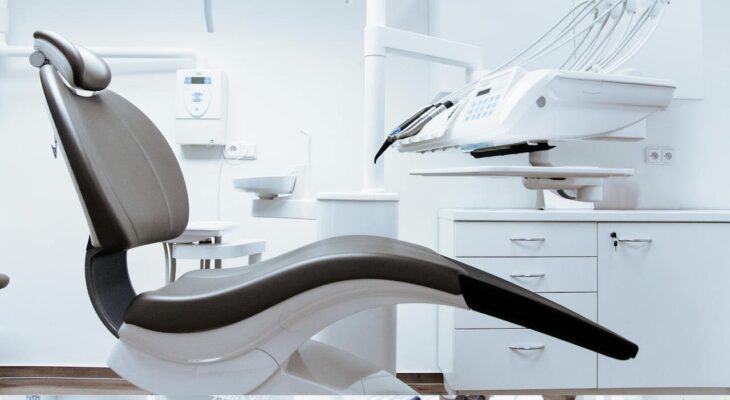In the dynamic setting of medical practice, maintaining organization and efficiency stands as a cornerstone for delivering top-tier patient care. From scheduling appointments to managing medical records, every facet of the operation demands refined processes to ensure seamless operations and patient contentment. Below are some effective methodologies to bolster organization and efficiency within a doctor’s office:
Introduce Electronic Health Records (EHR) System
Transitioning from traditional paper records to electronic health records (EHR) marks a pivotal stride toward enhancing organization and efficiency within a doctor’s office. EHR systems facilitate swift access to patient information, streamline documentation procedures, and mitigate the risks associated with manual record-keeping.
Through EHR, medical professionals and support staff can promptly retrieve patient data, update medical histories, and seamlessly exchange information across departments, thus augmenting collaboration and the continuum of care. Moreover, EHR systems can seamlessly integrate with other healthcare technologies, such as billing software and prescription management systems, thereby further streamlining administrative tasks and diminishing paperwork.
Employ Modular Shelving and Cabinets
Efficient organization in a medical office can be achieved through the strategic placement of medical office wall cabinets, ensuring easy access to essential supplies while maximizing available space. Through the optimization of vertical space and the utilization of adjustable shelving, medical supplies, patient records, and equipment can be methodically arranged for easy access.
By categorizing items according to their frequency of use and their proximity to the point of care, retrieval times are minimized, reducing the time spent searching for necessary supplies or documents. Furthermore, the incorporation of locking mechanisms or secure storage options ensures the protection of sensitive patient information and compliance with privacy regulations.
Streamline Check-In and Check-Out Procedures
Lengthy queues at the reception desk can provoke patient frustration and lead to delays in the waiting room. To enhance efficiency, consider incorporating self-check-in kiosks or mobile check-in options, empowering patients to complete registration processes electronically.
Similarly, refining check-out procedures by automating payment processing and prescription refills helps curtail wait times and bolsters overall patient satisfaction. Moreover, leveraging patient portals or mobile apps for post-visit follow-ups and feedback collection fosters enhanced communication and streamlines post-appointment processes.
Leverage Task Management Tools
Task management tools and software play a pivotal role in prioritizing and delegating tasks effectively within a doctor’s office. Whether it involves assigning follow-up calls to patients, monitoring medication refills, or managing administrative duties, employing task management tools ensures that responsibilities are fulfilled promptly.
By centralizing task management, staff members can maintain organization and concentrate on delivering quality patient care. Furthermore, integrating task management tools with EHR systems streamlines workflow processes and facilitates seamless communication among staff members.
Facilitate Clear Communication Channels
Effective communication among staff members forms the bedrock of maintaining organization and efficiency in a doctor’s office. Regular staff meetings, messaging platforms for internal communication, and clear protocols for information sharing help ensure alignment and cohesion.
Additionally, fostering open communication among doctors, nurses, and administrative staff cultivates a collaborative environment conducive to smoother patient care coordination. Moreover, providing ongoing communication training enhances interpersonal skills and underscores a patient-centered approach to care delivery.
Promote Continuous Staff Training and Development
Investing in ongoing staff training and development is paramount for enhancing efficiency and staying abreast of industry best practices. Whether it entails training on emerging medical technologies, refining customer service skills, or honing communication techniques, providing staff with opportunities for professional growth equips them to excel in their roles.
Furthermore, cross-training staff members on diverse tasks aids in mitigating staffing shortages and ensuring operational continuity during peak periods. Moreover, incentivizing staff members who actively engage in training initiatives fosters morale and motivation within the workplace.
Regularly Assess and Refine Processes
Continuous improvement serves as the cornerstone for optimizing organization and efficiency in a doctor’s office. Consistent assessment of current processes and workflows allows for the recognition of areas primed for improvement and the execution of necessary adjustments. Seeking input from both staff and patients aids in pinpointing areas of concern and identifying opportunities for enhancement.
By embracing a culture of continuous improvement, the doctor’s office can adapt to evolving needs and deliver an elevated standard of patient care. Furthermore, establishing performance metrics and benchmarks aids in tracking progress and identifying areas warranting further refinement, ensuring sustained efficiency and quality in patient care delivery.
Conclusion
Elevating organization and efficiency in a doctor’s office necessitates a multifaceted approach encompassing technology adoption, process optimization, and the cultivation of a culture of communication and continuous improvement. By implementing these strategies, doctors’ offices can streamline operations, reduce administrative burdens, and ultimately furnish superior patient care experiences.





